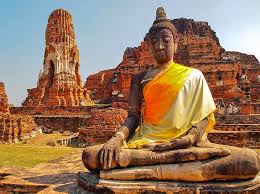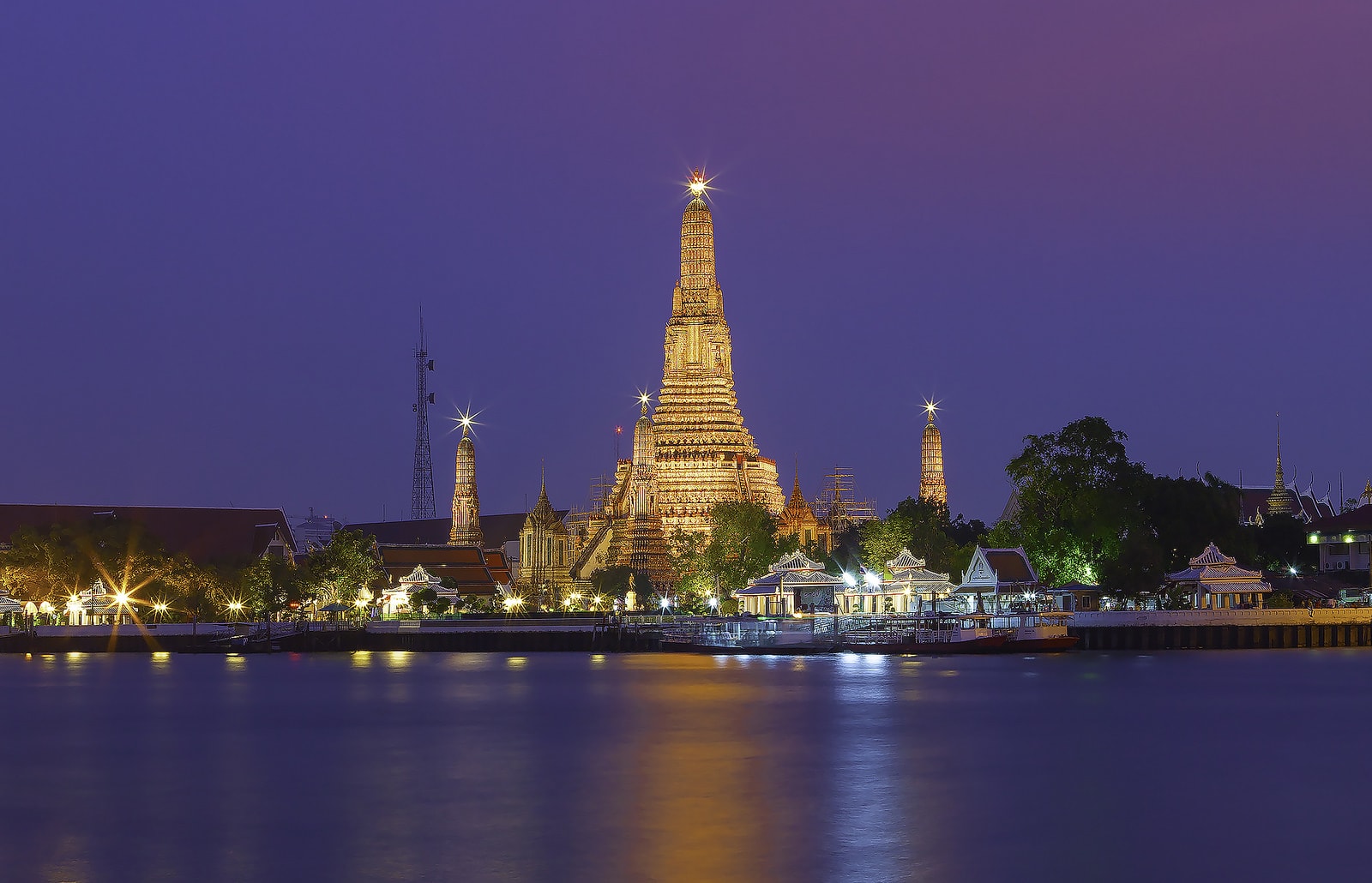Historical influences
The art of vegetable carving is thought to have originated in the Sukhothai Kingdom nearly 700 years ago.[5] Thai cuisine and the culinary traditions and cuisines of Thailand's neighbors, especially India, Malaysia & Indonesia, have mutually influenced one another over the course of many centuries. According to the Thai monk Venerable Buddhadasa Bhikku's writing, ‘India's Benevolence to Thailand’, Thai cuisine was influenced by Indian cuisine. He wrote that Thai people learned how to use spices in their food in various ways from Indians. Thais also obtained the methods of making herbal medicines from the Indians.
Some plants like sarabhi of the family Guttiferae, panika or harsinghar, phikun or Mimusops elengi and bunnak or the rose chestnut etc. were brought from India. Chili peppers, originally from the Americas, were introduced to Thailand by the Portuguese and Spanish.

The most notable influence from the West must be the introduction of the chili pepper from the Americas in the 16th or 17th century. It, and rice, are now two of the most important ingredients in Thai cuisine.[8] During the Columbian Exchange, Portuguese and Spanish ships brought new foodstuffs from the Americas including tomatoes, corn, papaya, pea eggplants, pineapple, pumpkins, culantro, cashews, and peanuts. Regional variations tend to correlate to neighboring states (often sharing the same cultural background and ethnicity on both sides of the border) as well as climate and geography.
Northern Thai cuisine shares dishes with Shan State in Burma, northern Laos, and also with Yunnan Province in China, whereas the cuisine of Isan (northeastern Thailand) is similar to that of southern Laos, and is also influenced by Khmer cuisine from Cambodia to its south, and by Vietnamese cuisine to its east. Southern Thailand, with many dishes that contain liberal amounts of coconut milk and fresh turmeric, has that in common with Indian, Malaysian, and Indonesian cuisine.

Thai cuisine is more accurately described as five regional cuisines, corresponding to the five main regions of Thailand:
- Bangkok: cuisine of the Bangkok metropolitan area, with Teochew and Portuguese influences. In addition, as a capital city, Bangkok cuisine is sometimes influenced by more dedicated royal cuisine.Tastes and looks of food in Bangkok have changed somewhat over time as they have been influenced by other cuisines such as Asian, European or Western countries.
- Central Thai: cuisine of the flat and wet central rice-growing plains, site of the former Thai kingdoms of Sukhothai and Ayutthaya, and the Dvaravati culture of the Mon people from before the arrival of Siamese in the area. Coconut milk is one of major ingredients used in Central Thai cuisine.
- Isan or northeastern Thai: cuisine of the more arid Khorat Plateau, similar in culture to Laos and also influenced by Khmer cuisine. The best-known ingredient is probably pla ra (fermented fish)
- Northern Thai: cuisine of the cooler valleys and forested mountains of the Thai highlands, once ruled by the former Lanna Kingdom and home of Lannaese, the majority of northern Thailand. This cuisine shares a lot of ingredients with Isan.
- Southern Thai: cuisine of the Kra Isthmus which is bordered on two sides by tropical seas, with its many islands and including the ethnic Malay, former Sultanate of Pattani in the deep south. The complex curries, food preparation techniques & usage of chillies and spices in Southern Thai cuisine form a great influence on the whole cuisine in general.
